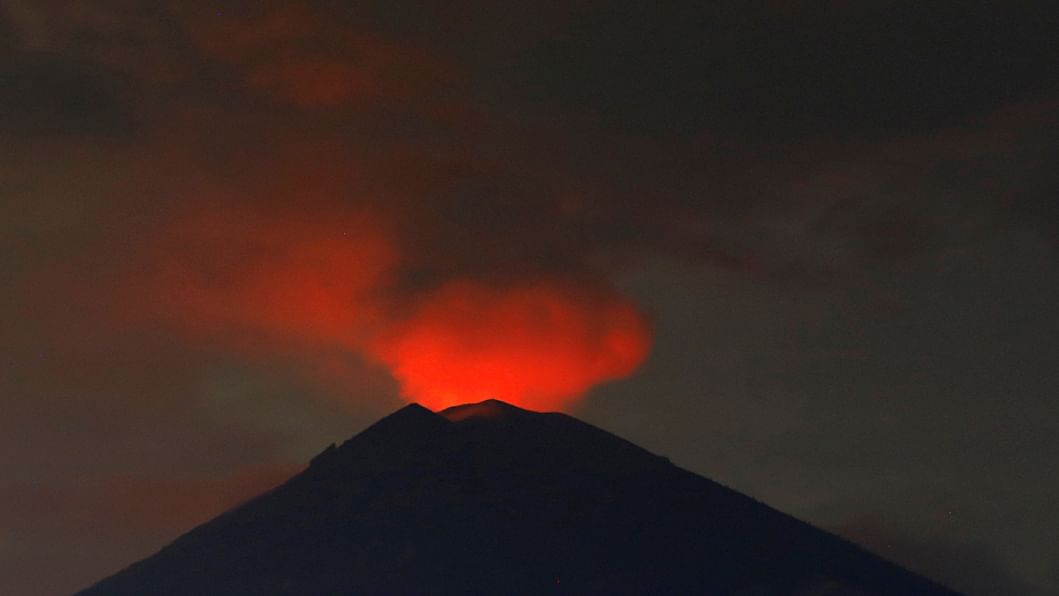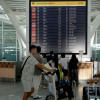Relief for stranded tourists as Bali's airport reopens

The shift in wind direction brings respite to thousands affected by the volcanic eruption.
The Indonesian authorities reopened Bali's international airport yesterday afternoon (November 29), bringing some respite to thousands of travellers stranded on the holiday island following the eruption of the Mount Agung volcano.
Operations at the airport, which had been closed since Monday (November 27), resume3 pmt 3pm.
A statement from AirNav Indonesia, the state-run air navigation service operator, said the decision to reopen the airport followed a coordination meeting attended by the relevant regulators and authorities as well as the Agency for Meteorology, Climatology and Geophysics.
Volcanology and Disaster Mitigation Centre chief I Gede Suantika attributed the reopening of the airport to a change in wind direction.
"Yes, it was due to the change in wind direction, but the downside is there is now the possibility of Lombok airport being closed again," he told The Straits Times.
Officials also cautioned that Bali's airport could be closed again because of the vagaries of wind direction. Earlier, they had warned that the runways at Ngurah Rai International Airport may have to remain closed until the weekend.
The airport shutdown affected 57,792 passengers on some 430 flights, both international and domestic, as of yesterday, said Ngurah Rai airport spokesman Arie Ahsanurrohim. But according to other estimates, the number of travellers affected was as high as 120,000.
The Indonesian immigration authorities have decided to extend visas for all foreigners stranded on the island.
Reuters news agency yesterday reported that some stranded Chinese tourists appeared confused and upset over their predicament.
"All the Chinese people here feel (it is) dangerous (because of) the mountain," Mr Richard Cao was quoted as saying. "You know in China we don't have such a mountain, and it is the first time we have faced this kind of problem."
Another tourist said his group of travellers had received little help in their efforts to leave, apart from being told to take a ferry to the neighbouring island of Java and to fly out via Surabaya.
"The travel agency left us alone," said the passenger, who was not identified. "They told us we need to go to Surabaya, but they couldn't even book the ticket, so why should we go to Surabaya?"
Other travellers, in the meantime, have begun to make their way overland to Java to catch a flight from Juanda International Airport in Surabaya, or Blimbingsari Airport in Banyuwangi.
Early yesterday, Singapore budget airline Scoot started moving its passengers by bus from Bali to Juanda airport.
But the journey, which includes a short ferry ride, takes more than 18 hours and many flights out of Surabaya are fully booked.
The daily bus services for Scoot passengers are on a first-come, first-served basis, and some passengers have decided to make their own way out of the island by private charter cars or vans.
Balitrac, a local limousine company with a fleet of 75 vehicles, has started plying to Juanda, with five carloads of tourists leaving yesterday. A company representative told The Straits Times that a ride, inclusive of the driver, costs three million rupiah (S$300, US$210) for a party of six.
"It's not so bad (with the cost) spread out among the four of us," said a Singaporean tourist who asked not to be named. "And I really need to be back home because I return to work next Monday (Dec 4)."
A large plume of white and grey ash and smoke hovered above Mount Agung yesterday after overnight rain partially obscured the fiery glow seen at its peak in the last few days, Reuters reported.

 For all latest news, follow The Daily Star's Google News channel.
For all latest news, follow The Daily Star's Google News channel. 








Comments